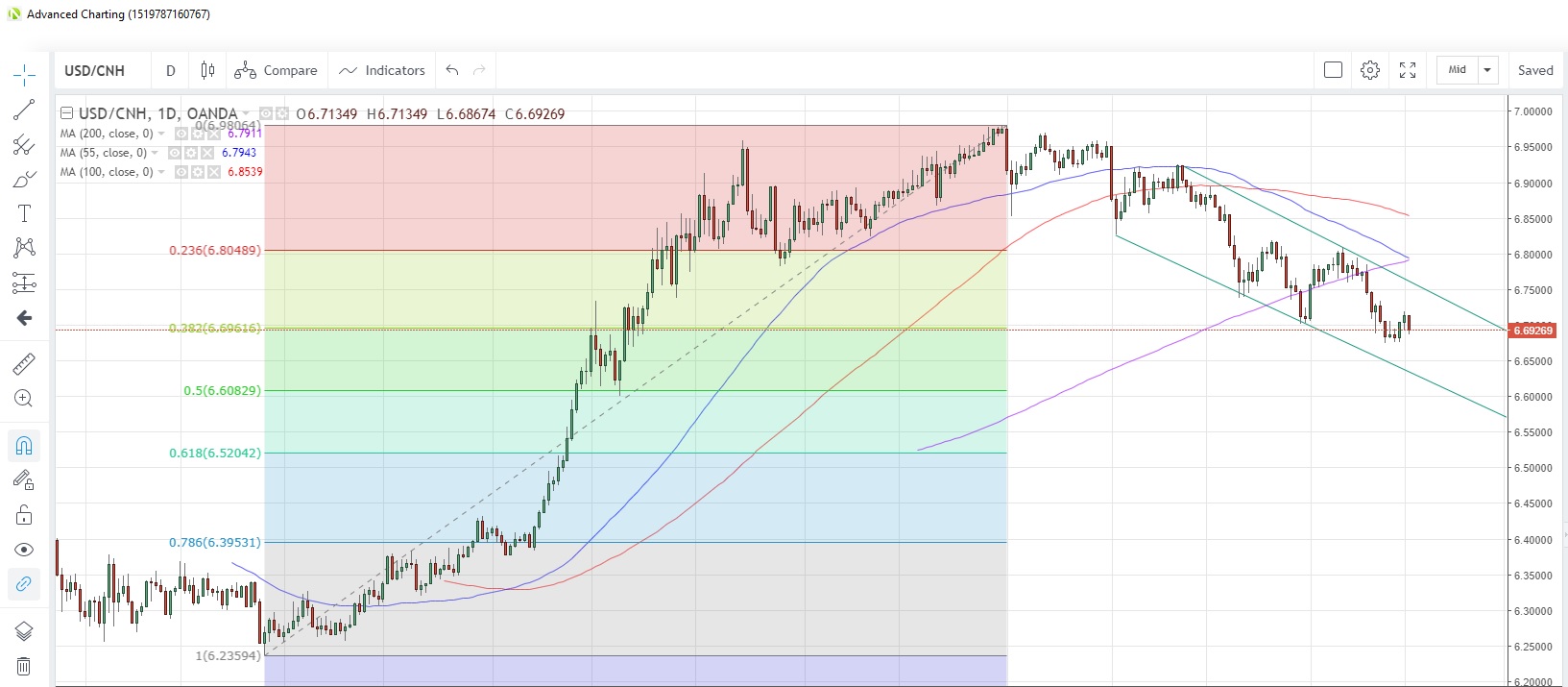U.S.-China close to trade deal
Weekend speculation that the U.S. and China were close to sealing a trade deal boosted risk appetite in Asia and weakened the U.S. dollar. The Wall Street Journal ran a story suggesting the gap was narrowing and could possibly be agreed so that U.S. President Trump and China’s Xi Jinping could sign it off at a summit around March 27.
The article lent support to most indices, with the China A50 index outperforming with gains of 2.1%. This comes on top of Friday’s 3.6% climb and the index touched its highest since March 22 last year. The Chinese yuan rose versus the U.S. dollar, with USD/CNH retreating from a one-week high to trade as low as 6.6867 this morning.
Source: OANDA fxTrade
Dollar snaps a three-day advance
The dollar index (DXY) which tracks the value of the U.S. dollar versus six major currencies, has started the week off on a soft note, led by progress on the trade front but also following comments by U.S. President Trump at the weekend. The index snapped a three-day winning streak as Trump blamed the Fed’s tight monetary policy for contributing to a stronger dollar, which hurt the U.S.’ competitiveness.
He added:
“I want a strong dollar that’s great for our country, not a dollar that is just so strong that it is prohibitive for us to be dealing with other nations”.
So ideally, a strong dollar, but not too strong—the so-called goldilocks value.
European sentiment indicators my boost risk appetite further
European traders will no doubt take notice of the positive day in Asia and the positive risk appetite moves look likely to continue. There are a couple of Eurozone economic indicators, with Sentix Investor Confidence seen improving marginally to -3.1 this month from -3.7 in February. Producer prices are expected to rebound to +0.4% m/m after January’s -0.8% collapse.
The U.S. calendar has only the ISM-NY Business Conditions index for February and December’s Construction Spending to contend with.

